Stepping into the world of sim racing can dramatically elevate your driving game experience, transforming it from a simple pastime into an immersive hobby. While high-end, direct-drive wheels offer the pinnacle of realism, a significant budget is not a prerequisite for a tactile and engaging experience. The market for affordable sim racing wheels has matured, providing excellent entry points that introduce the crucial element of force feedback—the technology that simulates the feel of the road, tire grip, and vehicle dynamics.
This guide provides a purely informational breakdown of the most notable cheap sim racing wheels available. We’ll explore their technical specifications, objective performance characteristics, and ideal use cases to help you understand the landscape. Whether you’re navigating the tracks in Assetto Corsa Competizione or drifting through the streets in Forza Horizon, a good wheel can make all the difference.
Understanding Budget Sim Racing Wheels
When evaluating budget-friendly racing wheels, it’s essential to manage expectations. These models are designed to provide a core simulation experience, prioritizing force feedback and basic controls over the premium materials and advanced features found in more expensive setups. The primary goal of a good entry-level wheel is to offer a significant upgrade over a standard gamepad controller, providing more precise input and a more intuitive feel for the car’s behavior. Understanding the full cost of a sim racing setup can help you budget accordingly for wheels, pedals, and a potential racing wheel stand.
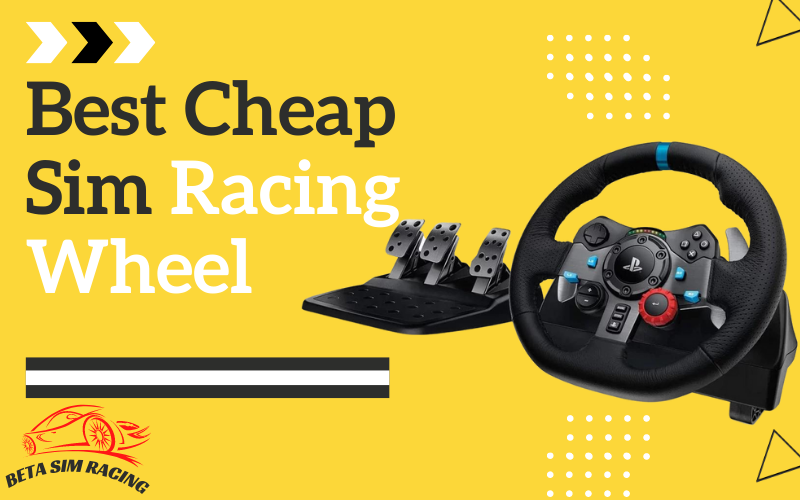
2025’s Top Budget-Friendly Sim Racing Wheels: A Detailed Comparison
This table offers a side-by-side look at the key specifications for each wheel analyzed in this guide. This allows for a quick and objective comparison of the most critical data points.
| Feature | Logitech G29/G920 | Thrustmaster 458 Spider | Thrustmaster T150/TMX | PXN V3II | DOYO R270 |
| Max. Rotation | 900° | 240° | 1080° | 180° | 270° |
| Force Feedback | Yes (Gear-Driven) | No (Bungee Cord) | Yes (Hybrid Belt/Gear) | No (Vibration) | No (Vibration) |
| Clutch Pedal | Yes (3-pedal set) | No (2-pedal set) | No (2-pedal set)* | No (2-pedal set) | No (2-pedal set) |
| Wheel Rim Material | Hand-stitched Leather | Rubber Grip | Rubber Grip | Plastic / Rubber | Plastic / Rubber |
| Wheel Diameter | 260 mm (10.24″) | 280 mm (11″) | 280 mm (11″) | 260 mm (10.24″) | 254 mm (10″) |
| Platform | G29: PS5/PS4/PC | Xbox Series X|S / Xbox One | T150: PS5/PS4/PC | PC/PS4/Xbox/Switch | PC/PS4/Xbox/Switch |
| G920: Xbox/PC | TMX: Xbox/PC | ||||
| Shifter Included | No | No | No | No | No |
| Pedal Materials | Stainless Steel Faces | Plastic | Plastic | Plastic | Plastic |
* The standard T150/TMX comes with a 2-pedal set. It is compatible with Thrustmaster’s T3PA 3-pedal upgrade, sold separately.
In-Depth Analysis of Top Budget Racing Wheels
Here, we delve into the specifics of each wheel, providing an objective analysis based on data. This is not about finding a single “best” wheel, but about understanding which wheel is the most suitable for different user needs and platforms.
1. Logitech G29 / G920 Driving Force
The Logitech G29 (PlayStation/PC) and its Xbox-compatible counterpart, the Logitech G920, have been the benchmark for entry-level force feedback wheels for years. Their longevity is a testament to their durable construction and reliable performance. For a direct comparison of the two, you can explore our Logitech G920 vs G29 analysis.
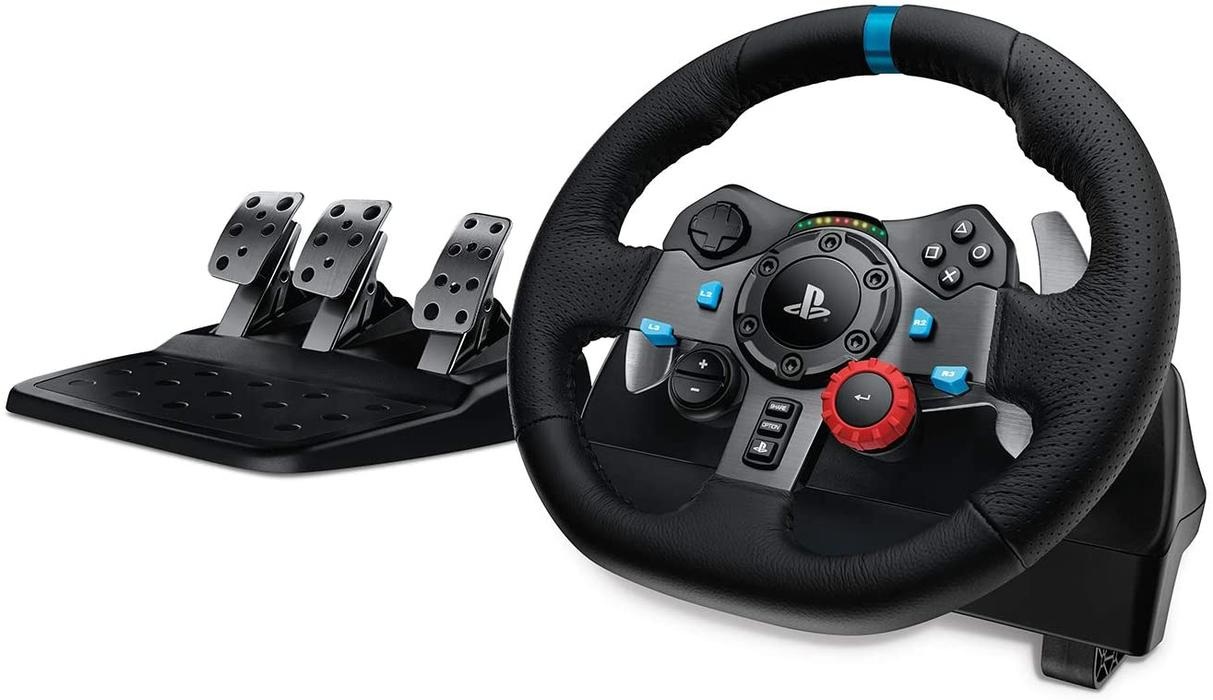
Key Specifications
- Rotation: 900 degrees lock-to-lock
- Force Feedback: Dual-Motor with Gear-Drive System
- Pedals: 3-pedal set (Accelerator, Brake, Clutch) with non-linear brake
- Materials: Anodized aluminum spokes, hand-stitched leather wheel cover, stainless steel shifters and pedal faces
- Compatibility: G29 for PS5, PS4, PS3, and PC. G920 for Xbox Series X|S, Xbox One, and PC.
Objective Analysis
The G29/G920’s primary strength is its build quality and comprehensive package. The inclusion of a three-pedal set with a clutch is a significant advantage at this price point, and the use of leather and metal components gives it a premium feel. The dual-motor, gear-driven force feedback is strong and provides clear information about the car’s behavior. However, the gear system can feel slightly notchy or noisy during aggressive turns compared to belt-driven systems. Its successor, the Logitech G923, offers a similar experience with the addition of “TRUEFORCE” haptics, but the G29/G920 often presents better value.
Key Takeaway: The Logitech G29/G920 is an excellent all-in-one starter package for users who want a durable, reliable force feedback wheel with a full 3-pedal set out of the box.
2. Thrustmaster Ferrari 458 Spider
This wheel is an officially licensed replica for the Xbox platform, aimed squarely at the ultra-budget end of the market. It is crucial to note that this wheel does not have force feedback.
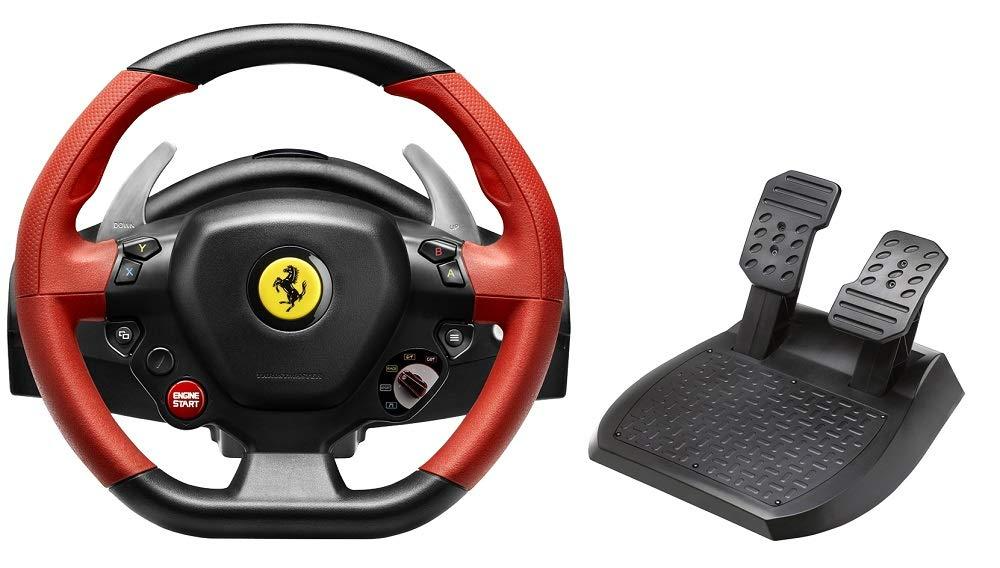
Key Specifications
- Rotation: 240 degrees
- Force Feedback: No (uses a bungee cord centering system)
- Pedals: 2-pedal set (Accelerator, Brake)
- Materials: Plastic wheel with rubber grips
- Compatibility: Xbox Series X|S, Xbox One
Objective Analysis
The Thrustmaster Ferrari 458 Spider provides a significant step up from a standard controller by offering a physical wheel and pedals. The main feature is the bungee cord system, which provides linear resistance to help re-center the wheel but does not simulate forces from the game. This makes it more of an enhanced controller than a true simulation device. Its 240-degree rotation is limited, making it suitable for arcade-style racing games but less so for serious simulators. Its primary appeal is its very low price and official Ferrari branding for Xbox users looking for a casual experience.
Key Takeaway: A viable option for casual players on Xbox who want a wheel-and-pedal form factor for a minimal investment and are not concerned with force feedback simulation.
3. Thrustmaster T150 RS / TMX
The Thrustmaster T150 RS (PlayStation/PC) and its Xbox-compatible twin, the TMX, are direct competitors to the Logitech G29/G920. They are a popular choice for those who prioritize the quality of the force feedback experience.
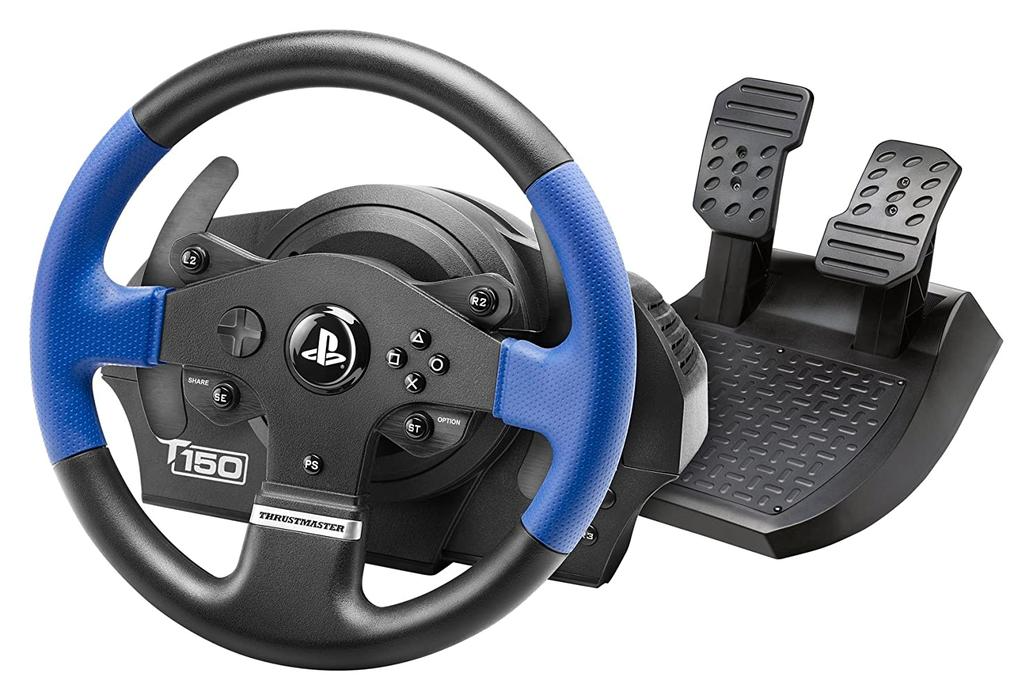
Key Specifications
- Rotation: 270 to 1080 degrees, adjustable
- Force Feedback: Hybrid Belt-Pulley and Gear System
- Pedals: 2-pedal set (Accelerator, Brake)
- Materials: Plastic wheel with rubber grips, metal paddle shifters
- Compatibility: T150 RS for PS5, PS4, PC. TMX for Xbox Series X|S, Xbox One, PC.
Objective Analysis
The standout feature of the T150/TMX is its hybrid belt-pulley force feedback system. This technology is generally considered to provide a smoother and quieter experience than the purely gear-driven system of the Logitech wheels, offering more nuanced feedback. The ability to adjust the rotation up to 1080 degrees also provides greater flexibility across different sim racing games. The main trade-off is in the included pedal set, which is a basic 2-pedal plastic unit without a clutch. While it is compatible with Thrustmaster’s superior pedal and shifter add-ons, this adds to the overall cost. For a more advanced option in the Thrustmaster ecosystem, the T300RS is a notable step up.
Key Takeaway: The T150/TMX is ideal for users who prioritize a smoother force feedback feel over premium wheel materials and are willing to start with a 2-pedal set.
4. PXN V3II
The PXN V3II is a multi-platform wheel that falls into the category of game peripherals rather than dedicated simulation hardware. Like the Thrustmaster 458 Spider, it lacks true force feedback.
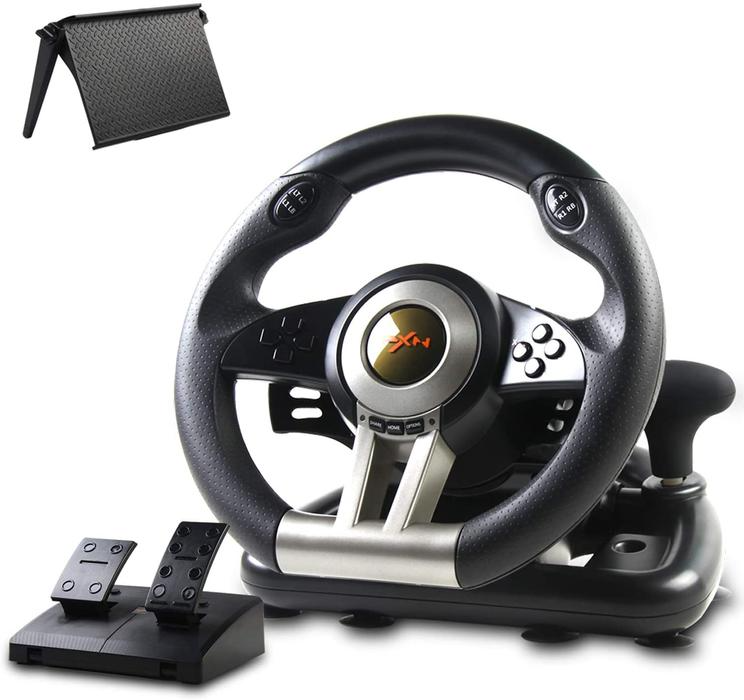
Key Specifications
- Rotation: 180 degrees
- Force Feedback: No (uses vibration motors)
- Pedals: 2-pedal set (Accelerator, Brake)
- Materials: Plastic
- Compatibility: PC, PS4, Xbox One, Nintendo Switch
Objective Analysis
The PXN V3II is positioned as a universal, plug-and-play wheel for a wide range of consoles and games. Its key selling point is its broad compatibility and low cost. However, its technical specifications are very limited for sim racing. The 180-degree rotation is restrictive and only suitable for arcade racers. The feedback provided is simple vibration, not force feedback, meaning it can buzz and shake but won’t communicate road texture or tire slip. This places it in the same category as a “rumble” gamepad.
Key Takeaway: A budget peripheral for casual, multi-platform gamers who want the feel of a steering wheel for arcade titles without any simulation features.
5. DOYO R270
Product Status: The DOYO R270 is an older, deep-budget model that has inconsistent availability. It is often sold under various generic brand names and is considered legacy hardware.
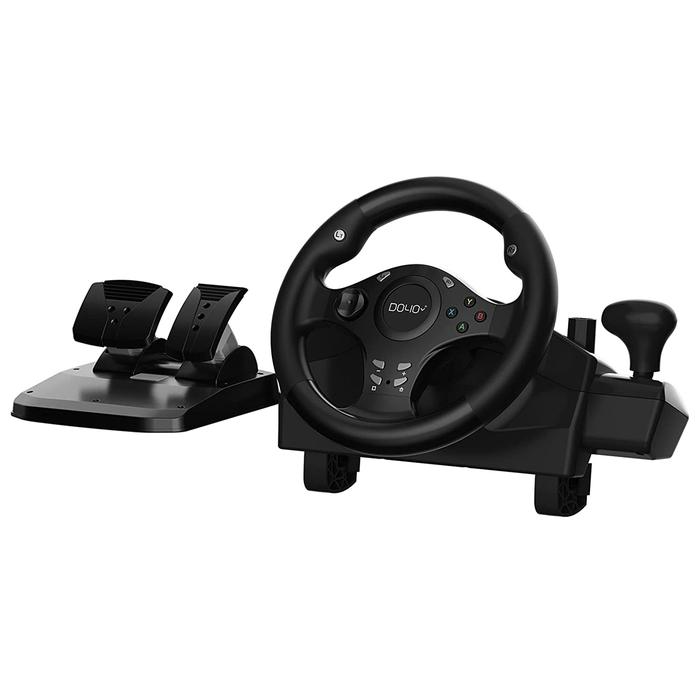
Key Specifications
- Rotation: 270 degrees
- Force Feedback: No (uses vibration motors)
- Pedals: 2-pedal set (Accelerator, Brake)
- Materials: Plastic
- Compatibility: PC, PS4, PS3, Xbox One, Xbox 360, Switch
Objective Analysis
The DOYO R270, when available, is one of the lowest-cost wheel options on the market. It offers a slightly better rotation angle than the PXN V3II at 270 degrees but suffers from the same fundamental limitation: it uses simple vibration for feedback, not a force feedback motor. This means it cannot provide the immersive, informative experience that is central to sim racing. Its build quality is entirely plastic, and it is designed for casual plug-and-play use.
Key Takeaway & Current Alternative: Given its dated technology and spotty availability, the DOYO R270 is difficult to recommend. A user seeking a wheel in this ultra-low-price category would be better served by the Thrustmaster Ferrari 458 Spider (for Xbox) or the similar Thrustmaster T80 (for PlayStation), which offer better build quality and support from a more established brand.
Key Factors to Consider When Choosing a Budget Racing Wheel
Navigating the specifications of budget racing wheels requires understanding a few key concepts. A grasp of these factors will help you make a more informed decision.
Force Feedback: The Core of Immersion
This is the single most important feature that separates a toy from a simulation tool. Force feedback uses motors to resist your inputs and transmit the feeling of the car’s interaction with the track surface through the wheel.
- Gear-Driven (e.g., Logitech G29): Uses gears to connect the motors to the wheel. It’s powerful and cost-effective but can sometimes feel less smooth.
- Hybrid Belt/Gear (e.g., Thrustmaster T150): Uses a combination of a belt and gears. This system often feels smoother and quieter than gear-only systems, providing a more refined experience.
- Bungee Cord / Vibration (e.g., Thrustmaster 458, PXN V3II): These are not force feedback. A bungee cord provides simple spring-like resistance, and vibration motors just shake the wheel. They do not offer a true simulation feel.
Rotation Angle: From Arcade to Simulation
The rotation angle, measured in degrees, determines how far you can turn the wheel.
- 180°-270°: This is a very limited range, typical of the cheapest wheels. It’s sufficient for fast-paced arcade games but lacks the precision needed for serious simulation.
- 900°-1080°: This range mimics the rotation of a real road car. It allows for much finer control and is the standard for wheels intended for sim racing, including titles like Gran Turismo 7.
Build Quality and Materials
In the budget category, most wheels are primarily plastic. However, some models incorporate higher-quality materials in key areas. A leather-wrapped rim (Logitech G29) provides a more comfortable and durable grip than rubber or plastic. Metal paddle shifters offer a more positive, tactile click during gear changes.
Pedal Set Quality
Pedals are a critical part of the experience. Budget sets are typically plastic and feature two pedals (accelerator and brake). Higher-end budget options may include a three-pedal set with a clutch and use more robust materials like metal on the pedal faces. The feel of the brake pedal is particularly important; a “progressive” or “non-linear” brake pedal offers increasing resistance as you press it, more closely mimicking a real car’s hydraulic brake system.
Platform Compatibility (PC, Xbox, PlayStation)
Compatibility is paramount. Wheels are typically designed for either the Xbox ecosystem or the PlayStation ecosystem. While most console wheels also work on PC, a PlayStation wheel will not work on an Xbox, and vice versa. Always verify that the wheel you are considering is compatible with your specific gaming platform.
Frequently Asked Questions (FAQ)
Is a cheap racing wheel worth it?
Yes, if you choose a model with true force feedback (like the Logitech G29 or Thrustmaster T150). The jump in immersion and control from a gamepad to a force feedback wheel is significant and can completely change your racing experience.
Do PS4 racing wheels work on PS5?
Generally, yes. Most officially licensed PlayStation 4 racing wheels, including the Logitech G29 and Thrustmaster T150, are forward-compatible with the PS5 for supported games.
Why are some racing wheels so expensive?
Higher-end racing wheels use more advanced technology, such as powerful belt-drive or direct-drive motors, which offer much stronger, faster, and more detailed force feedback. They also use premium materials like full metal construction and Alcantara, and often feature interchangeable wheel rims.
Is Forza or Gran Turismo better with a wheel?
Both franchises are significantly more immersive with a racing wheel. A force feedback wheel allows you to feel the loss of traction and make more precise steering inputs, which is beneficial in both simulation-focused games like Gran Turismo and sim-arcade titles like Forza.
What is the minimum rotation I should look for?
For a genuine sim racing experience, a wheel with at least 900 degrees of rotation is highly recommended. This allows for the 1:1 steering ratio used in most road cars and provides the precision needed for smooth driving.

With a background in mechanical engineering and over a decade in competitive sim racing, Kenji serves as our lead Sim Racing Physics & Hardware Analyst. He deconstructs complex topics like force feedback and suspension geometry, helping readers understand the crucial engineering behind a perfect lap time. Kenji’s passion is to translate real-world motorsport principles into actionable knowledge for the sim racing community.
